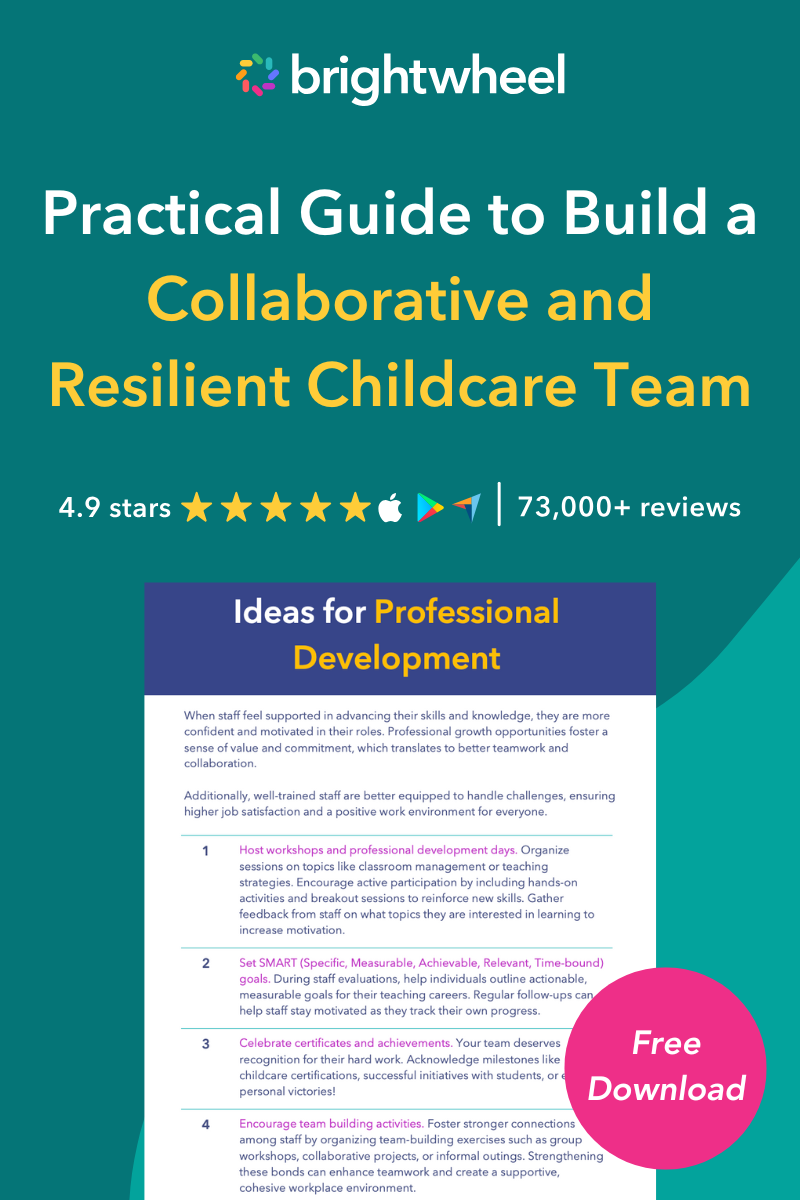Beyond daily lesson planning, teachers handle professional development, administrative tasks, and classroom maintenance. While classroom aides and after-hours work help manage these duties, sometimes more dedicated time is needed. That's where a teacher in-service day comes in.
This article will explore the purpose of teacher in-service days, their benefits, and practical tips to make the most of them.
What is a teacher in-service day?
A teacher in-service day is a non-student day set aside for professional development, training, and collaborative work. Unlike typical planning periods where teachers focus on specific lessons for their own classes, in-service days are about broader educational improvement.
They offer educators a dedicated opportunity to learn new teaching methodologies, get up-to-date on changing curriculum standards and district policies, and strategize with colleagues on how to better support student learning and development.
Benefits of a teacher in-service day
Teacher in-service days offer numerous advantages that contribute to the growth and success of both educators and students. These dedicated days provide valuable opportunities for professional development, collaboration, and aligning teaching practices with current educational goals. Below are some key benefits of teacher in-service days.
- For teachers: In-service days offer time to enhance skills and collaborate with peers on challenges. This leads to greater job satisfaction and renewed motivation. Teachers can also use this time to learn about tools to improve efficiency, like brightwheel’s app for centralizing lesson plans and family communication.
- For children: When teachers grow professionally, children receive more effective learning experiences. For example, an in-service day might introduce new strategies to support children’s unique developmental needs.
- For administrators: Supporting teacher development helps reduce staff turnover and attract highly skilled educators, creating a stable and thriving learning environment for your entire childcare program.
Professional Development Day Agenda
A free, printable agenda for staff training days.
What do teachers do on an in-service day?
An in-service day can be structured with required activities or left flexible for teachers to choose their own focus. The goal is always to maximize professional growth. Here are seven effective activities for your next teacher in-service day:
Invite a guest speaker
Ask an expert to present on topics like new teaching strategies, work-life balance, or conflict management.Incorporate team building activities
Strengthen your childcare program through team building activities that foster trust and collaboration among staff, encouraging them to share strategies and work together.Focus on new teaching techniques
New research and data regarding child development and education is constantly evolving. Keep your program current by training teachers on the latest research and methods in early childhood education.Review changes to standards or policies
It is normal to have continuous changes to a school’s policies and procedures. A lot of minor changes can be communicated simply in writing and don’t require a formal meeting. However, for significant policy changes, you can use this time for in-depth discussions, allowing staff to ask questions and provide feedback.Host skill-building workshops
Use interactive exercises, role-playing, and games to help teachers build new skills and strengthen existing ones in a fun, engaging way.Collaborate with other childcare programs
Network with other local providers to share resources, support each other, and promote cooperation.Leave time for feedback
End the day by asking teachers for their thoughts. Continuous feedback will help you improve each future in-service day.Prioritizing social-emotional support for staff
An in-service day is a perfect opportunity to focus on the social-emotional well-being of your teachers, which directly impacts their ability to support young learners.Why social-emotional well-being matters
Social-emotional well-being involves the capacity to regulate emotions, foster positive relationships, and effectively engage in social settings. For educators, sustaining this balance is essential, as it has a direct impact on classroom dynamics and student performance. Studies show that teachers who receive social-emotional support are more capable of establishing nurturing educational environments.
How to support your teachers' well-being
- Mindfulness and stress management: Incorporate mindfulness exercises and stress-reduction techniques into in-service agendas. Practices such as guided meditation or deep-breathing exercises can help educators manage stress and maintain emotional balance.
- Peer support networks: Facilitate the formation of peer support groups where educators can share experiences, discuss challenges, and offer mutual encouragement. These networks foster a sense of community and collective resilience.
- Professional development on self-care: Offer workshops that emphasize the importance of self-care and provide practical strategies for integrating self-care routines into daily life. Topics might include time management, setting boundaries, and recognizing signs of burnout.
- Access to mental health resources: Ensure that educators are aware of and have access to mental health resources, such as counseling services or employee assistance programs. Providing information on how to seek help when needed is vital.
The impact on classroom environments
When educators focus on their social-emotional well-being, they become better equipped to build strong relationships with students, handle classroom behavior efficiently, and apply social-emotional learning (SEL) in the classroom. This comprehensive approach advantages both teachers and students, fostering a nurturing and effective educational environment.
By dedicating time during in-service days to focus on and improve educators' social-emotional well-being, early childhood programs contribute to the overall well-being of their teaching staff and the achievement of their students.
Lifelong education for educators
Just as teachers hope to instill a lifelong love of learning in children, they too benefit from continuous education. Setting aside time for a teacher in-service day is an invaluable practice that benefits your teachers, the children in your care, and your entire childcare program. When you invest in your team’s enrichment, everyone wins.


